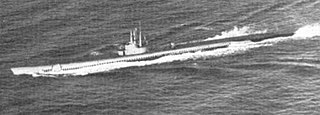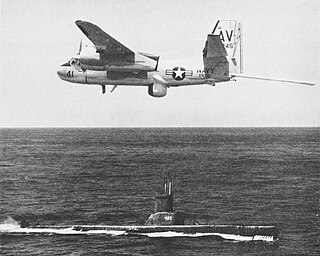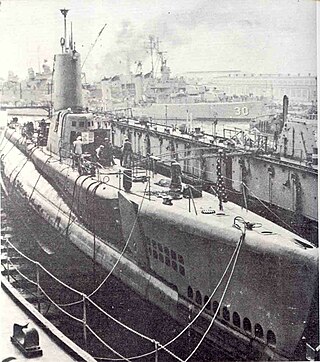
USS Runner (SS/AGSS-476), a Tench-class submarine, was the second ship of the United States Navy to be named for the runner, an amberfish inhabiting subtropical waters.

USS Trout (SS-566), a Tang-class submarine, was the second ship of the United States Navy to be named for the trout.

USS Dogfish (SS-350), a Balao-class submarine, was the only vessel of the United States Navy to be named for the dogfish.

USS Grenadier (SS-525), a Tench-class submarine, was the second ship of the United States Navy to be named for the grenadier, a soft-finned deep sea fish of the Macrouridae with a long, tapering body and short, pointed tail family, also known as rattails.

USS Cutlass (SS-478), is a Tench-class submarine now in the service of the Republic of China Navy. She was the only ship of the United States Navy to be named for the cutlassfish, a long, thin fish found widely along the coasts of the United States and in the West Indies. Her keel was laid down by the Portsmouth Navy Yard on 10 July 1944. She was launched on 5 November 1944 sponsored by Mrs. R. E. Kintner, and commissioned on 17 March 1945 with Commander Herbert L. Jukes in command.

USS Remora (SS-487), a Tench-class submarine, was the only ship of the United States Navy to be named for the remora, a fish with a suctorial disk on its head enabling it to cling to other fish and to ships.

USS Sirago (SS-485), a Tench-class submarine, was named for the sirago, a small, freshwater tropical fish.

USS Sea Leopard (SS-483), a Tench-class submarine, was the only ship of the United States Navy to be named for the leopard seal. Her keel was laid down by the Portsmouth Navy Yard on 7 November 1944. She was launched on 2 March 1945 sponsored by Hon. Margaret Chase Smith, United States Congresswoman from Maine, and commissioned on 11 June 1945.

USS Irex (SS-482), a Tench-class submarine, was the only ship of the United States Navy to be named for the irex, one of the oceanic fishes belonging to the family carangidae.

USS Medregal (SS-480/AGSS-480), a Tench-class submarine, was the only ship of the United States Navy to be named for the medregal, a streamlined, fast-swimming, bluish-colored fish of the jack family which abounds in waters of the West Indies and in the Atlantic as far north as the Carolinas.

USS Trumpetfish (SS-425), a Balao-class submarine, was the only ship of the United States Navy to be named for trumpetfish, any of several fishes so-called for their deep, compressed body and long, tubular snout. Her keel was laid down on 23 August 1943 at Philadelphia by the Cramp Shipbuilding Company. She was launched on 13 May 1945 sponsored by Mrs. Oswald S. Colclough, and commissioned on 29 January 1946.

USS Corporal (SS-346), a Balao-class submarine, was a ship of the United States Navy named for the corporal, an alternate name for the fallfish, found in streams of the eastern United States.

USS Halfbeak (SS-352), a Balao-class submarine, was a ship of the United States Navy named for the halfbeak.

USS Sea Poacher (SS/AGSS-406), a Balao-class submarine, was a vessel of the United States Navy named for the sea poacher, a slender, mailed fish of the North Atlantic.

USS Cubera (SS-347), a Balao-class submarine, was a ship of the United States Navy named for the cubera, a large fish of the snapper family found in the West Indies.

USS Sablefish (SS/AGSS-303), a Balao-class submarine, was a ship of the United States Navy named for the sablefish, a large, dark fish found along North America's Pacific coast from California to Alaska.

USS Jallao (SS-368), a Balao-class submarine, was a ship of the United States Navy named for the jallao, a pearl-white haemulonid food fish of the Gulf of Mexico.

USS Sea Owl (SS/AGSS-405), a Balao-class submarine, was a ship of the United States Navy named for the sea owl, a lumpfish of the North Atlantic Ocean.

USS Sennet (SS-408) was a Balao-class submarine, a ship of the United States Navy named for the sennet, a barracuda.

USS Ronquil (SS-396), a Balao-class submarine, was the only ship of the United States Navy named after the ronquil, a spiny-finned fish found along the northwest coast of North America. It has a single dorsal fin and a large mouth and resembles the tropical jawfish.



















